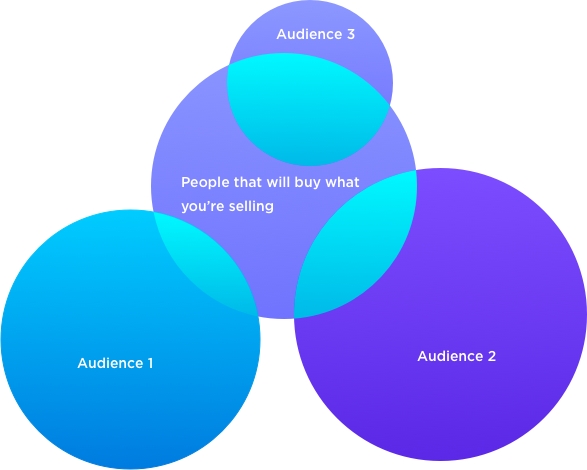What is A/B Testing?
Introduction to A/B Testing
A common mistake new Facebook advertisers make is only selecting one audience and ad to advertise. They don’t consider all avenues for revenue and different messaging options.
A/B testing, also know as split testing, is a method for determining the best promotional and marketing strategies. The test simultaneously runs multiple variants of a campaign, gathering data to determine the most effective characteristics.
A/B testing is something you should be doing for all of your campaigns.
Here’s why: At the start of your campaign, you don’t know what works and what doesn’t. An ad with a strange video may be just the attention-grabber your campaign needs to stand out. An audience you didn’t expect to drive sales could start producing your best ROI.
A/B testing, or split testing, is one of the most important practices for any marketer. To understand what A/B testing is and why it's so important, we'll review Facebook ad campaign structure.
Every Facebook ad campaign contains three elements:
• The first is the overall stats of the campaign. Whenever you press ‘Boost’ on a post, there’s a campaign in Ads Manager with a title showing your overall spend, financial metrics, and engagement metrics.
• The second element is the ad set of the campaign—in other words, the campaign’s audience. Who’s being served the ads in this campaign? Where do you want your ad located? Which individuals do you want to target?
• Finally, there’s the ad creative for the campaign: the post’s look on Facebook, Instagram, and other placements.
What are the drawbacks of creating a campaign without A/B testing?
To the right of each of these boxes, you’ll see spend, revenue, and return on ad spend. For this hypothetical ad campaign, $100 was spent and $50 was made in revenue. Therefore, the return on ad spend is about 0.5. For every dollar spent, you made $0.50 back in gross ticket sales.
This is what campaigns tend to look like for most event organizers. They represent a missed opportunity—and a poor gamble. Without A/B testing, you might spend the entire marketing budget for your show on a single ad set with a single creative—and not necessarily hit the right fans.
That’s why we recommend A/B testing, or split testing: It’s the best way to improve your overall return on ad spend on your campaigns.
Here’s what A/B testing looks like at the structural level, with another hypothetical ad campaign. We’ll use the same $100 we spent in this previous example, but this time we’ll split that budget evenly over two different ad sets.
A/B Testing at the Structural Level
Here’s the first ad set from our initial example to the left. $50 was spent; $50 in revenue was made, so the return on ad spend is 1x. Two creatives were made: ad one and ad two. Of those two, the second ended up yielding a higher return on ad spend.
This is the second ad set to the right. Here, we split the budget and put $50 toward a second ad set (in this case, mailing list combined with website traffic). This ad set outperformed the first. It yielded a higher return on ad spend: about 5X. Plus, that 5X came from directing budget toward two different ad creatives. Spending $25 on ad one made you $100; spending $25 on ad two made you $150.
By including multiple ad sets, we discovered which audience came with more attractive customer acquisition costs—which, in turn, resulted in more sales. By including multiple ad sets, each targeting a slightly different group of fans (i.e., a custom audience or another set of interests), you may actually find a group of fans that is more willing to buy tickets at a more favorable cost. Your $100 will net you $300 rather than $50.
The best part about A/B testing is that you don’t need to limit yourself to two ad sets.
Here’s an example of a campaign where we used six ad sets. Notice how the performance of these ad sets differ? The two ad sets on the bottom have very high return on ad spends. The two ad sets on the top have low return on ad spends.
If we had only included one audience in this campaign (i.e., the interest based audience), we might not have sold any tickets whatsoever. The $1,500 we spent might not have resulted in any sales at all.
This is why A/B testing is crucial to any event marketer’s gameplan. By including more ad sets in your campaign, you’ll find different segments of fans interested in buying tickets and see a much higher return on ad spend as a result.
Spend on Multiple Audiences
Serving your ads to distinct audiences will help you hone in on the group most likely to purchase. By using multiple target audiences (i.e., different segments of people) in your campaign, you can find more qualified buyers.

With Facebook's targeting options, there's a lot you can test. Once you determine your high-performing audiences, begin reallocating your budget toward those audiences to scale up the success.
Develop Your Creative
An advertiser can deliver a powerful message by testing multiple ads. Test different creatives (i.e., different pictures, videos or text), to determine what messaging most appeals to your consumers.

Use attention-grabbing photos or videos and avoid images with text (Facebook penalizes images with heavy text). Try different headlines and post text, too. Then, analyze the results and see what messaging has the greatest impact on your potential customers.
Key Takeaways
A/B testing is the process of running multiple variants of a campaign and gathering data to determine the most effective characteristics
Use multiple target audiences (i.e., different segments of people) in your campaign to find more qualified buyers
Test different creatives (i.e., different pictures, videos or text) to determine what messaging most appeals to your consumers
Last updated
Was this helpful?